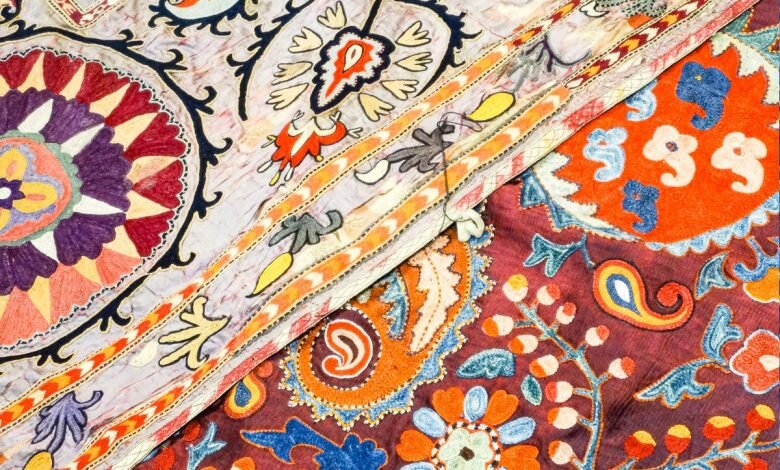Bukhara-Duzi: an ancient embroidery tradition

TEHRAN – Bukhara-Duzi is an appealing form of embroidery originating from the historic city of Bukhara, now a touristic city in Uzbekistan.
It is a meticulous and time-consuming craft, with artisans spending years mastering the techniques to produce exquisite pieces. In fact, the craft's complexity and beauty are evident in the precision and skill required to execute the intricate designs.
Known for its intricate designs and vibrant colors, Bukhara-Duzi has a rich cultural heritage deeply rooted in the history and traditions of Central Asia and Iran. The craft reflects the artistic ingenuity of the Bukhara artisans who, for centuries, have transformed simple fabrics into stunning works of art.
Centuries ago, Bukhara was a hub for learning and culture, home to many scholars and scientists. Moreover, it was renowned for its abundance of cotton and silk, materials that became the foundation for the development of Bukhara-Duzi.
As mentioned by Visit Iran, while the exact origins of Bukhara-Duzi are not well-documented, it is clear that this art form gained popularity during the Seljuk Dynasty and continued to thrive through the Mongol and Timurid eras.
Bukhara-Duzi is a type of Roudouzi (embroidery) where artisans use needle and thread to create intricate and colorful patterns on plain fabrics. The craft involves embellishing fabrics with elaborate stitches and designs, often depicting floral motifs, geometric shapes, and intricate patterns that are both decorative and symbolic.
The primary fabrics used in Bukhara-Duzi are chalvar, cotton, and occasionally wool or silk. Cotton, produced in abundance in Bukhara, was even exported to Iraq due to its high quality. These materials provide a sturdy base for the elaborate stitching that characterizes Bukhara-Duzi.
Artisans employ a variety of motifs in their designs, including Mikhak (carnation), Anari (pomegranate), Shah Abasi, Jenaghi, Sibi (apple), Goldani (vase), Gol o Buteh (flowers), Paisley, Afsari, Khatayi (leaves), Sa’ati (watch), Shamsei (sunburst), Bazubandi (armband), Band e Rumi, Taki, and Shajari (tree) patterns. These motifs are carefully stitched using a palette of vibrant colors such as wine red, indigo, white, jade green, yellow, mustard, brown, and orange, creating a visually striking effect.
Bukhara-Duzi is not only a decorative art but also a functional one. It is used to adorn a variety of household items, including drapes, korsi (a traditional Iranian low table with a heater underneath) covers, tablecloths, beddings, prayer rugs, cushions, and decorative tableaus. The embroidery adds an element of luxury and elegance to these everyday items, transforming them into cherished pieces of art.
Some of the finest examples of Bukhara-Duzi can be found in prestigious museums worldwide, including the Hermitage Museum, the Metropolitan Museum of Art, the Louvre, the Museum of Decorative Arts, and the British Museum. These artifacts serve as a testament to the enduring appeal and cultural significance of this traditional craft.
AM
Leave a Comment